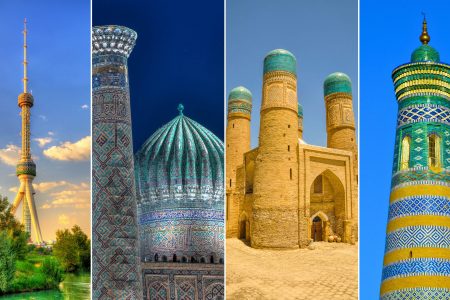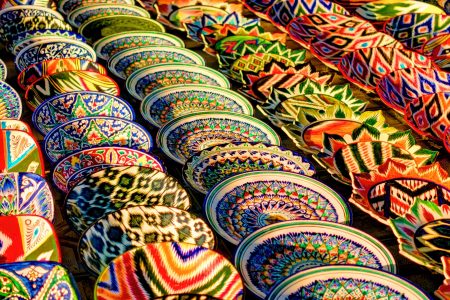The city was first mentioned in Narshahi’s novel “History of Bukhara” in the 10th century in the form of “Nur” (named after the famous “Nur” spring, which is located in the city). According to local legends, the city dates from the time of Alexander the Great. The city was later named “Nurota” in honor of famous Shayx Abulhasan Nuriy (9th century) who lived here. This territory is considered one of the line of the Silk Road as a branch of caravans passed through Nurota. Besides that, it was considered the most advanced trading center as well as it played a huge role in the strategic military. For a long time only “Nur” fortress was the second gateway to Bukhara and Samarkand oases after Jizzakh. Nurata (historically “Nur”) is a remote city in the north of Bukhara, which lies on the border of a culturally settled and nomadic area. The local Oghuz Turks first settled in Khorasan and then on the peninsula of Asia Minor in front of Nurata oasis and founded the historically famous Seljuk state (11th century). Many caravans came to Nurata via Tosh yo`li (old stone road). Genghis Khan’s troops entered Bukhara from this road (in January 1220) in Nurata. That is why Tosh yo`li (stone road) is also called “Khan’s Road”. Nurata was an important strategic fortress for Samanids and beyond.
Nurata’s immense wealth is its marble field. The semi-ready and ready products of “Nurotamarmar” industrial enterprise in the city are well known not only in the Uzbek market, but also in the world market as well.
Folk arts and crafts have been developed since ancient times. Carpentry, blacksmithing, plumbing, construction, pottery, coppersmithing, embroidery, and jewelry made by Nurata masters have always been in demand.
Remains of old Nurata castle (also known as Alexandria, Alexander’s castle), the walls of the defensive wall (approx. 4th -3rd centuries BC), the mosque “Chilustun” (early 9th -20th centuries), “the great Dome Mosque ”(16th century),“ Sayidota ”,“ Oqmasjid ”,“ Bargso’z ”mosques (late 19th -early 20th centuries) and others have been preserved as architectural and historical monuments.
The mysterious nature of Nurata spring is due to its natural location and the healing properties of the spring. In addition, the phosphorus elements of the spring water makes the water and the fish shine and make them look attractive. The water from Nurata spring flows at a speed of 290 liters per second through thousands of kilometers of underground passages. The spring water temperature is +19.5 degrees in winter and summer.
For thousands of years, spring has never been frozen as it contains numerous minerals in drinkable healing water. It was discovered that spring water consist of a substance gold element, which is a cure for intestinal diseases. It has long been considered that iodine in water is a cure for goiter, a rare bromine, and nerve disease. The silver element in spring water helps to keep its freshness.
Moreover, Nurata Shrine is one of the well liked places of all tourists.



